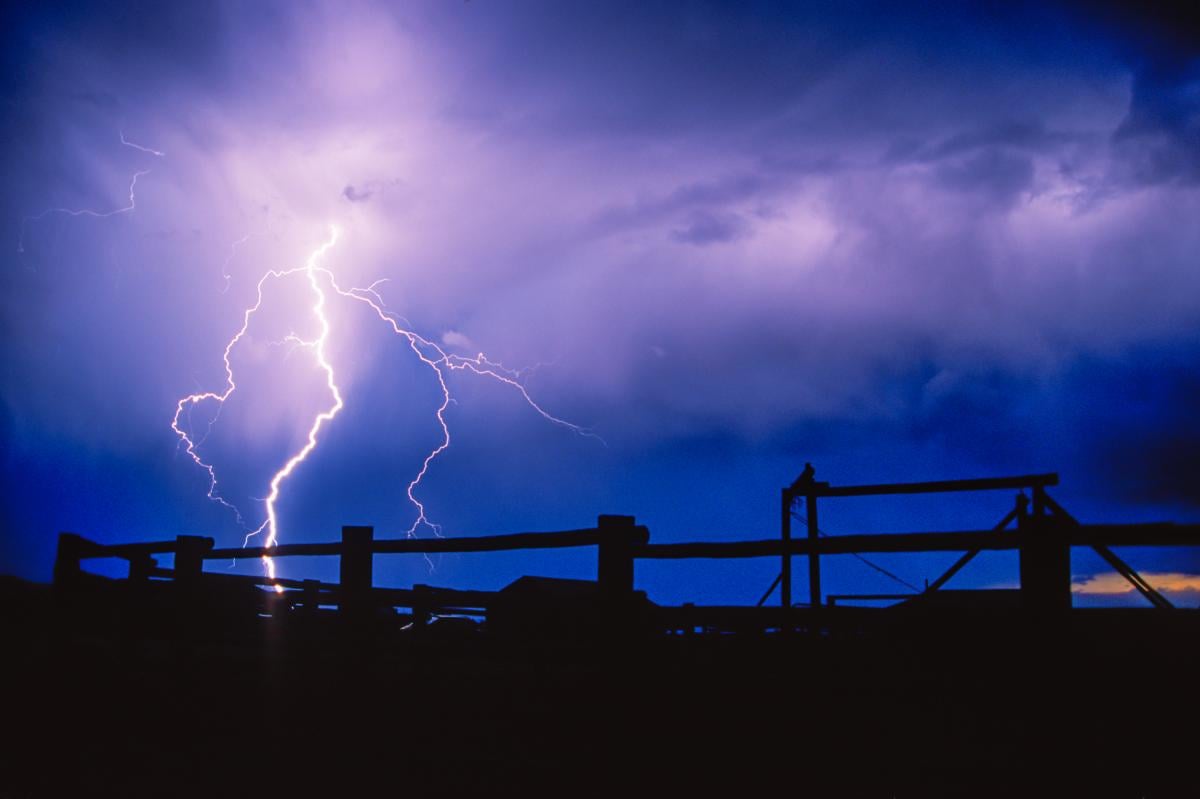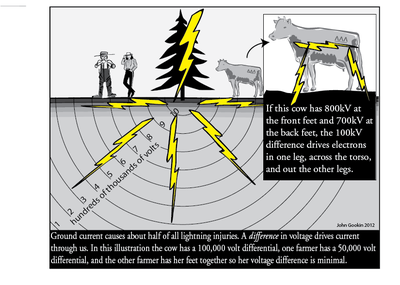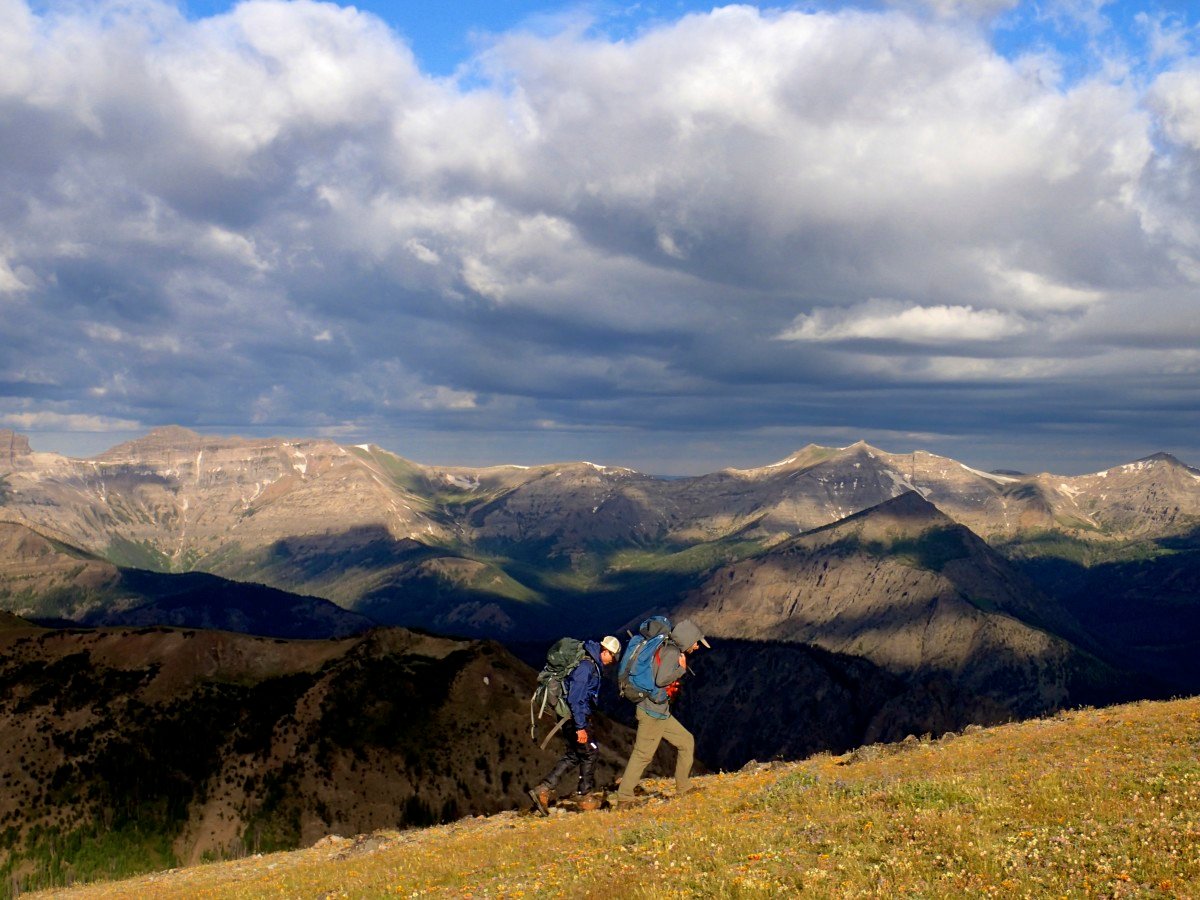
Photo by Brad Christensen.
On Tuesday Aug. 21, NOLS Curriculum and Research Manager John Gookin gave a presentation about lightning safety in Lander at the Noble Hotel classroom. The presentation focused on the brochure developed by NOLS and the National Weather Service on lightning safety.
[Editor's note: Brochure content can also be found in more detailed form in the book NOLS Lightning]
The brochure reminds people that when in the backcountry (30 minutes or more from modern vehicles or buildings) there are no “safe places” from lightning. It lets readers know where the safest places to be are. It also covers the way lightning strikes and how to prevent being injured or killed by lightning. The brochure uses a 0-10 safety scale, 10 being in a modern building or vehicle and nothing in the backcountry being safer than a three.
Lightning positions require standing or squatting with your feet close together to protect from ground current. More than half of all lightning fatalities are caused by ground current running through the body as a result of parts of the body touching the ground far enough apart that the currents in the ground are disparate. The electrons in one leg cross through the body to even it out. If they are close together, then there isn’t a difference in the ground currents, and one feels no electricity.

The presentation included a ground current experiment that allowed people to feel how ground current works. Participants placed their fingers close together into the dirt and did not feel pain, but if they started to move them apart, they could feel the volts. This also demonstrated that being in a modern building is safest, because wiring prevents ground current from causing injury.
Gookin also played a video that he produced, which describes lightning safety. The four major ways to reduce lightning risk are:
- Timing your visits with local weather patterns
- Find safer terrain if you hear thunder
- Avoid trees and long conductors once lightning gets close
- Get in the lightning position if lighting is striking nearby and you can’t get to safer terrain.
Find more information in the book NOLS Lightning
Editor's note: Post updated 8/15/2018
- Ground Current
- Nols
- Lightning Safety
- Lightning Positions
- Lightning
- Lightning Strike
- Educators Notebook
- Backcountry
- National Weather Service
Written By



